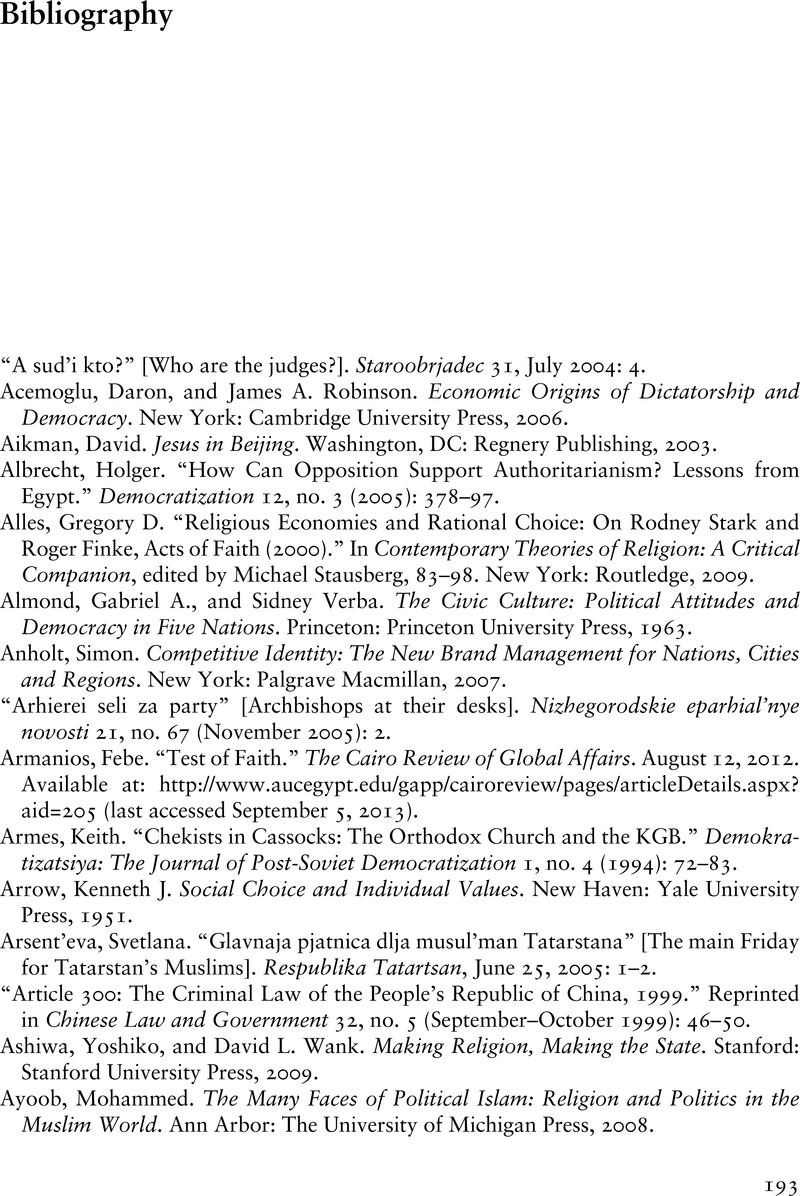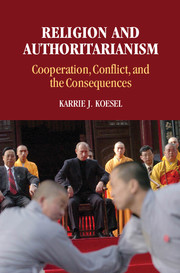Book contents
- Frontmatter
- Dedication
- Contents
- List of Figure, Table, and Illustrations
- Acknowledgments
- 1 Introduction: The Politics of Religion
- 2 Religion and State Games
- 3 Regulating the Religious Marketplace
- 4 The Political Economy of Religious Revival
- 5 The Politics of Faith, Power, and Prestige
- 6 Conclusions: Collaboration and Conflict in Comparison
- Appendix A Methodology and Data
- Appendix B Interviews Cited
- Bibliography
- Index
- References
Bibliography
Published online by Cambridge University Press: 05 June 2014
- Frontmatter
- Dedication
- Contents
- List of Figure, Table, and Illustrations
- Acknowledgments
- 1 Introduction: The Politics of Religion
- 2 Religion and State Games
- 3 Regulating the Religious Marketplace
- 4 The Political Economy of Religious Revival
- 5 The Politics of Faith, Power, and Prestige
- 6 Conclusions: Collaboration and Conflict in Comparison
- Appendix A Methodology and Data
- Appendix B Interviews Cited
- Bibliography
- Index
- References
Summary

- Type
- Chapter
- Information
- Religion and AuthoritarianismCooperation, Conflict, and the Consequences, pp. 193 - 222Publisher: Cambridge University PressPrint publication year: 2014



